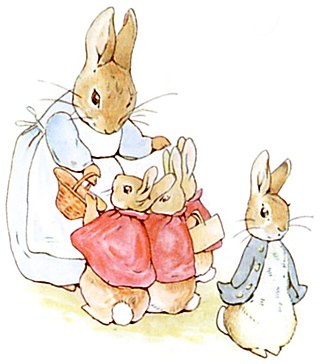
A picture book combines visual and verbal narratives in a book format, most often aimed at young children. With the narrative told primarily through text, they are distinct from comics, which do so primarily through sequential images.

The John Newbery Medal, frequently shortened to the Newbery, is a literary award given by the Association for Library Service to Children (ALSC), a division of the American Library Association (ALA), to the author of "the most distinguished contributions to American literature for children". The Newbery and the Caldecott Medal are considered the two most prestigious awards for children's literature in the United States. Books selected are widely carried by bookstores and libraries, the authors are interviewed on television, and master's theses and doctoral dissertations are written on them. Named for John Newbery, an 18th-century English publisher of juvenile books, the winner of the Newbery is selected at the ALA's Midwinter Conference by a fifteen-person committee. The Newbery was proposed by Frederic G. Melcher in 1921, making it the first children's book award in the world. The physical bronze medal was designed by Rene Paul Chambellan and is given to the winning author at the next ALA annual conference. Since its founding there have been several changes to the composition of the selection committee, while the physical medal remains the same.
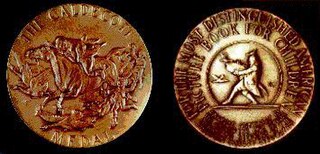
The Randolph Caldecott Medal, frequently shortened to just the Caldecott, annually recognizes the preceding year's "most distinguished American picture book for children". It is awarded to the illustrator by the Association for Library Service to Children (ALSC), a division of the American Library Association (ALA). The Caldecott and Newbery Medals are considered the most prestigious American children's book awards. Beside the Caldecott Medal, the committee awards a variable number of citations to runners-up they deem worthy, called the Caldecott Honor or Caldecott Honor Books.

The Hans Christian Andersen Awards are two literary awards given by the International Board on Books for Young People (IBBY), recognising one living author and one living illustrator for their "lasting contribution to children's literature". The writing award was first given in 1956, the illustration award in 1966. The former is sometimes called the "Nobel Prize for children's literature".
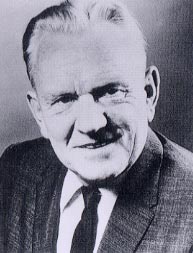
Meindert De Jong, sometimes spelled de Jong, DeJong or Dejong was a Dutch-born American writer of children's books. He won the international Hans Christian Andersen Award in 1962 for his contributions as a children's writer.

Wanda Hazel Gág was an American artist, author, translator, and illustrator. She is best known for writing and illustrating the children's book Millions of Cats, the oldest American picture book still in print. Gág was also a noted print-maker, receiving international recognition and awards. Growing Pains, a book of excerpts from the diaries of her teen and young adult years, received widespread critical acclaim. Two of her books were awarded Newbery Honors and two received Caldecott Honors. The New York Public Library included Millions of Cats on its 2013 list of 100 Great Children's Books.
Zilpha Keatley Snyder was an American author of books for children and young adults. Three of Snyder's works were named Newbery Honor books: The Egypt Game, The Headless Cupid and The Witches of Worm. She was most famous for writing adventure stories and fantasies.

Karen Cushman is an American writer of historical fiction.
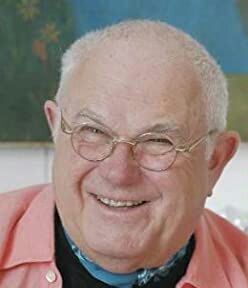
Thomas Anthony "Tomie" dePaola was an American writer and illustrator who created more than 260 children's books, such as Strega Nona. He received the Children's Literature Legacy Award for his lifetime contribution to American children's literature in 2011.

Virginia Esther Hamilton was an American children's books author. She wrote 41 books, including M. C. Higgins, the Great (1974), for which she won the U.S. National Book Award in category Children's Books and the Newbery Medal in 1975.
Armstrong Wells Sperry was an American writer and illustrator of children's literature. His books include historical fiction and biography, often set on sailing ships, and stories of boys from Polynesia, Asia and indigenous American cultures. He is best known for his 1941 Newbery Medal-winning book Call It Courage.
The International Board on Books for Young People (IBBY) is an international non-profit organization committed to bringing books and children together. The headquarters of the IBBY are located in Basel, Switzerland.
Blair Lent, who sometimes wrote as Ernest Small, was an American illustrator and writer of children's books, perhaps best known for those with Chinese themes such as Tikki Tikki Tembo (1968). He won the 1973 Caldecott Medal for U.S. picture book illustration, recognizing The Funny Little Woman by Arlene Mosel. Lent used a wide range of techniques in his illustrations, including acrylic painting, cardboard cutouts, colored pencil and ink and wash.
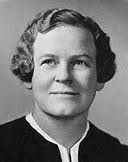
Alice Dalgliesh was a naturalized American writer and publisher who wrote more than 40 fiction and non-fiction books, mainly for children. She has been called "a pioneer in the field of children's historical fiction". Three of her books were runners-up for the annual Newbery Medal, the partly autobiographical The Silver Pencil, The Bears on Hemlock Mountain, and The Courage of Sarah Noble, which was also named to the Lewis Carroll Shelf Award list.
Paul Galdone was an illustrator and writer known best for children's picture books.
The Northeast Children's Literature Collection (NCLC) is housed at Archives & Special Collections at the University of Connecticut. The purpose of the Northeast Children’s Literature Collection is to preserve the history of the creation of our best literature written for children. Emphasis is given to the perception of children’s literature as a form of art over other educational or social intentions. Archives are collected to document the process of children’s book creation by authors and illustrators in collaboration with agents, editors, designers and publishers.
Emil Weiss was a Czech illustrator, reporter, and architect.

Margot Ladd Tomes was an American artist and illustrator of children's books. Books that she illustrated have been among The New York Times Best Illustrated Children's Books of the Year, Jack and the Wonder Beans in 1977 and If There Were Dreams to Sell in 1984. She also provided illustrations for Jean Fritz’s Newbery Honor Book and American Book Award Homesick: My Own Story in 1982.
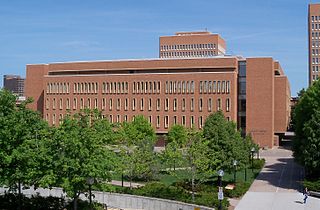
The University of Minnesota Libraries is the library system of the University of Minnesota Twin Cities campus, operating at 12 facilities in and around Minneapolis–Saint Paul. It has over 8 million volumes and 119,000 serial titles that are collected, maintained and made accessible. The system is the 17th largest academic library in North America and the 20th largest library in the United States. While the system's primary mission is to serve faculty, staff and students, because the university is a public institution of higher education its libraries are also open to the public.
Vera Bock was a Russian Empire-born artist who spent most of her career in the United States. She is known for her book illustrations and for the posters she made for the Works Progress Administration during the Great Depression.











